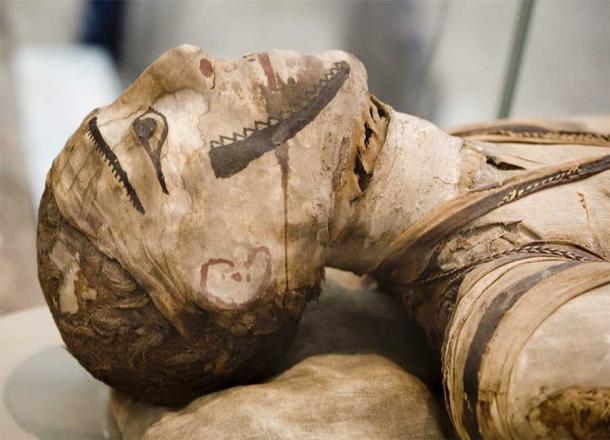A newly translated papyrus from ancient Egypt dating back 3,500 years provides a rare insight into Egyptian embalming techniques. The ancient medical text details a procedure never identified before and reveals the process of wrapping a dead person’s face with bandages soaked in ointment to reduce swelling.
Ancient Egyptians are well-known for their art of mummification. They believed the physical form was part of the human soul, so preserving the physical body was considered essential to enjoying the afterlife. The body was a link to the essence of the person who had once inhabited it.
Yet despite the enormous scale on which Egyptians mummified their dead, the process and the techniques used are still not fully understood.
Much of what we know about ancient Egyptian mummy-making comes from fifth century BC written accounts by Greek historian Herodotus. He chronicled the steps taken by ancient Egyptians in preparing and preserving cadavers.
First, embalmers would have removed the dead individual’s organs — including the brain, which would be extracted through the nose. Then, they would sterilize the chest and abdominal cavities, before placing the body in a salty fluid containing a mixture of soda ash and sodium bicarbonate. This would drain the bodily fluids and prevent the body from rotting. Finally, they would wrap the body in strips of linen and bury it.

Ancient Egyptian mummified face. Source: markrhiggins / Adobe Stock
New Face Embalming Secrets Revealed
Based on a manual recently discovered in a 3,500-year-old medical papyrus, and translated by University of Copenhagen researchers, more details have been discovered about the complex embalming process used to prepare the dead for the afterlife and, in particular, the deceased person’s face. It is the oldest surviving manual on mummification yet discovered, predating the only two other examples of embalming texts by more than a thousand years.
The six-meter long manuscript, named the Papyrus Louvre-Carlsberg and dating to approximately 1450 BC, contains guidelines to remind the embalmer of the steps and processes they must take while performing the mummification process.
“The text reads like a memory aid, so the intended readers must have been specialists who needed to be reminded of these details, such as unguent recipes and uses of various types of bandages,” writes Egyptologist Sofie Schiødt, who translated the papyrus.
“One of the exciting new pieces of information the text provides us with concerns the procedure for embalming the dead person’s face,” Dr Schiødt adds. “We get a list of ingredients for a remedy consisting largely of plant-based aromatic substances and binders that are cooked into a liquid, with which the embalmers coat a piece of red linen. The red linen is then applied to the dead person’s face in order to encase it in a protective cocoon of fragrant and anti-bacterial matter. This process was repeated at four-day intervals.”

The papyrus contains new evidence of the procedure for embalming the deceased’s face, where the face is covered with a piece of red linen and aromatic substances. Illustration: Ida Christensen
A Ritualized Process
According to the University of Copenhagen , the importance of the Papyrus Louvre-Carlsberg papyrus in detailing the embalming process lies in its outline of the process being divided into intervals of four, with the embalmers actively working on the mummy every four days.
“A ritual procession of the mummy marked these days, celebrating the progress of restoring the deceased’s corporeal integrity, amounting to 17 processions over the course of the embalming period,” reports Dr Schiødt. “In between the four-day intervals, the body was covered with cloth and overlaid with straw infused with aromatics to keep away insects and scavengers.”
The new discovery is incredibly important to the understanding of the complex mummification rites and processes conducted in ancient Egypt.
Top image: Ancient Egyptian mummy. Credit: Andrea Izzotti / Adobe Stock
By Joanna Gillian
Related posts:
Views: 0
 RSS Feed
RSS Feed

















 February 28th, 2021
February 28th, 2021  Awake Goy
Awake Goy  Posted in
Posted in  Tags:
Tags: 
















